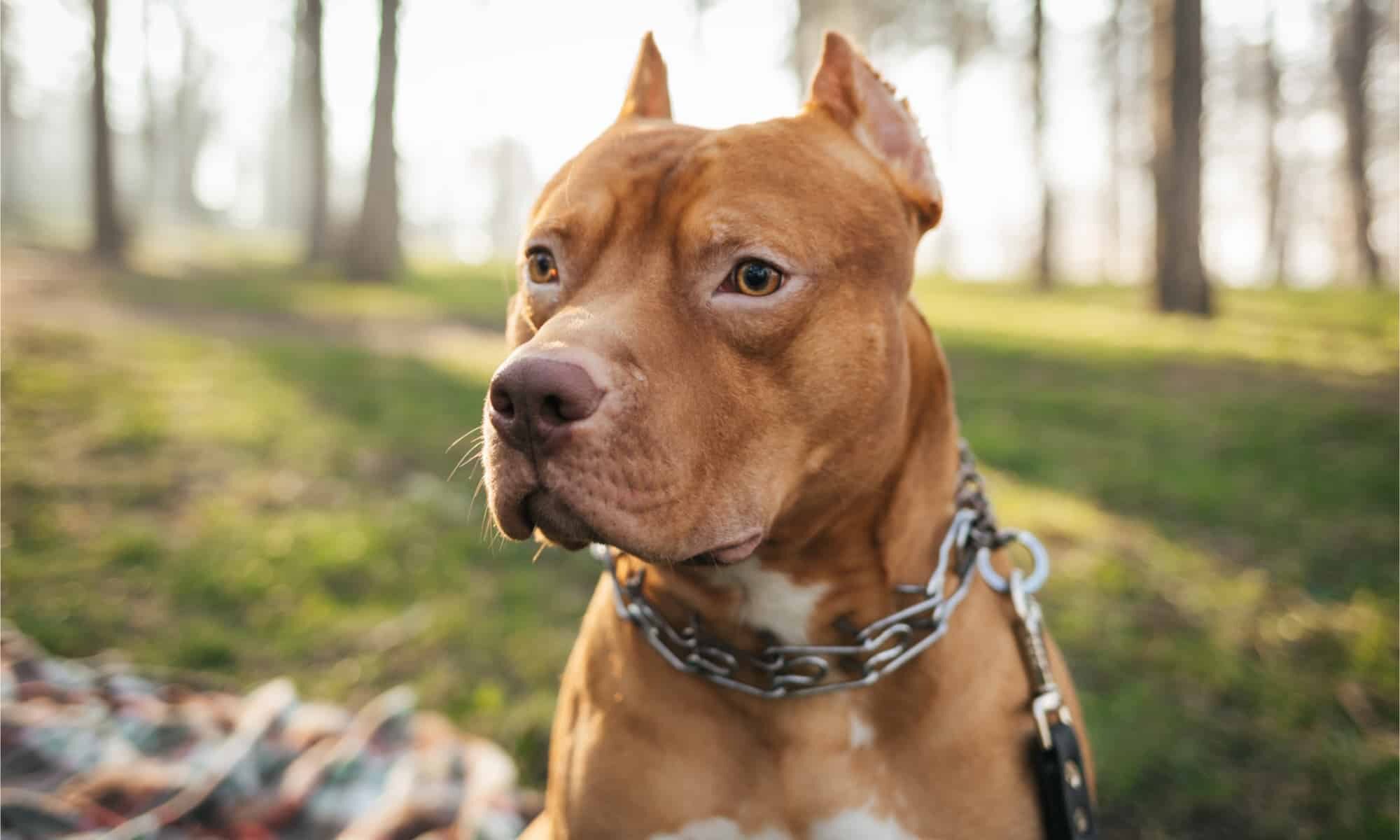Pit bulls are some of the most common breeds in America, but did you know that they aren’t actually a true “breed” of dog? The term “pitbull” encompasses a wide range of dog breeds that are descended from bulldogs and terriers, each of which has unique dispositions and appearances.
One of the newer “pit bull” breeds is the pocket pit bull. These miniature dogs are significantly smaller than standard pit mixes and are growing in popularity. Today, we will be looking at pit bulls and pocket pit bulls to understand better what makes them different. Pocket Pitbull vs Pitbull; why are they unique?
Let’s get started!
Comparing a pocket pitbull and a pitbull
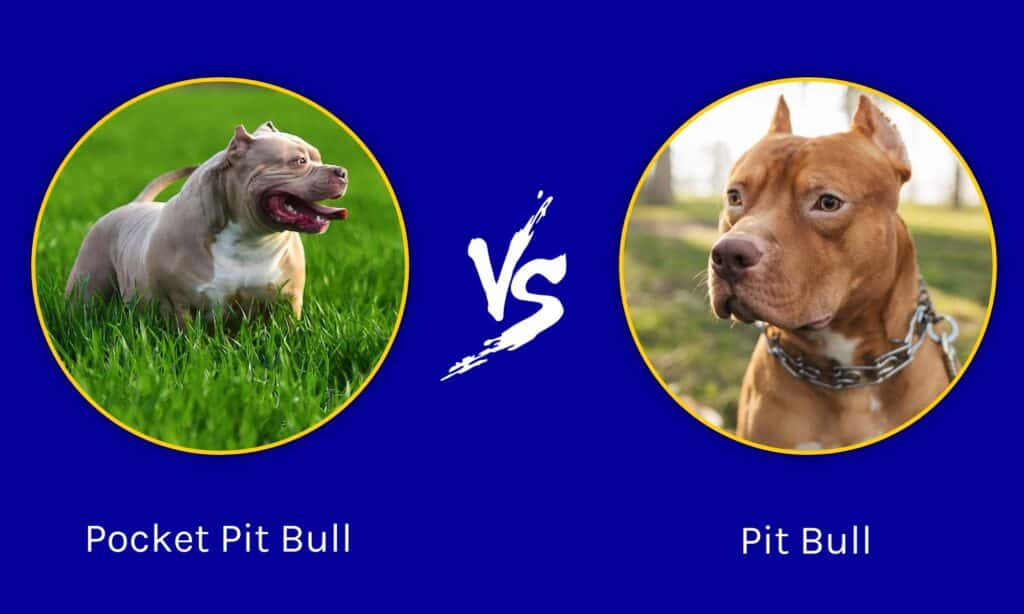
| Pocket Pitbull | Pit bull | |
|---|---|---|
| Breed origin | Miniature breeds were created during the 1990s as a new wave of “Designer breeds.” | Three different breeds: American pit bull terrier, American Staffordshire terrier, and Staffordshire bull terrier. Often cross-bred beginning in the 1870s. |
| Size | Height: 12-16 inches Weight: 11-22 lbs | Height: 18-24 inches Weight: up to 80 lbs |
| Appearance | Miniature versions of pit bulls. | Large and muscular. Stout with heavily muscled faces. |
| Living requirements. | Adapts well to apartment living and smaller environments. | Needs to be well-exercised, especially if living in an apartment. |
| Temperament | Natural protectors. Intelligent. Extremely caring and loving. | Natural protectors. Intelligent. Extremely caring and loving. |
Pocket Pitbull vs a Pitbull: Lifespan
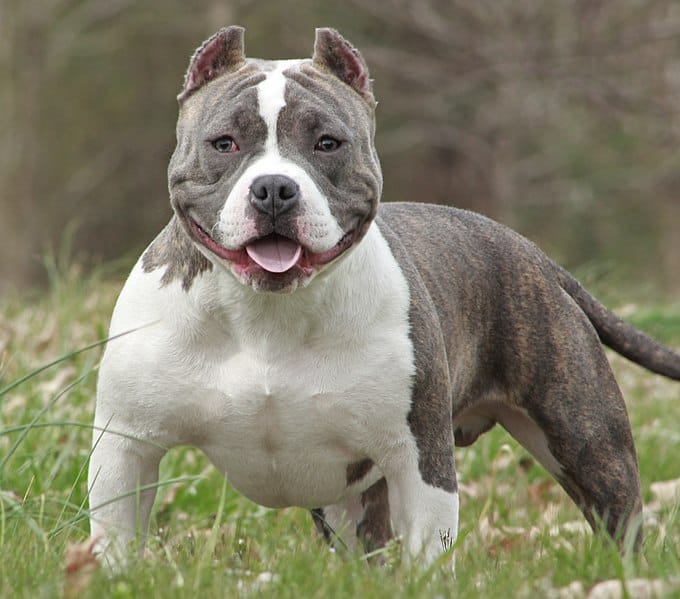
Pocket pitbulls only reach about 16 inches tall.
The American Bully is a fairly healthy dog breed. It has a lifespan of about eight to 13 years old. Despite being a designer dog breed, it has a lifespan of up to 14 years old! Every dog breed is prone to medical conditions due to their size and sometimes genetic reasons.
The lifespan of a Pocket Pitbull vs a Pitbull is about the same. Both breeds have an average lifespan of around 12 years. However, there are some individual dogs that may live longer or shorter depending on their overall health and genetics.
Let’s sum it up:
- Pocket pit bulls are a smaller version of the pit bull breed.
- They are just as friendly and loving as their larger counterparts.
- Pocket pit bulls require less exercise than regular pit bulls, making them better suited for small homes or apartments.
The 5 main differences between a Pocket Pitbull and a Pit bull
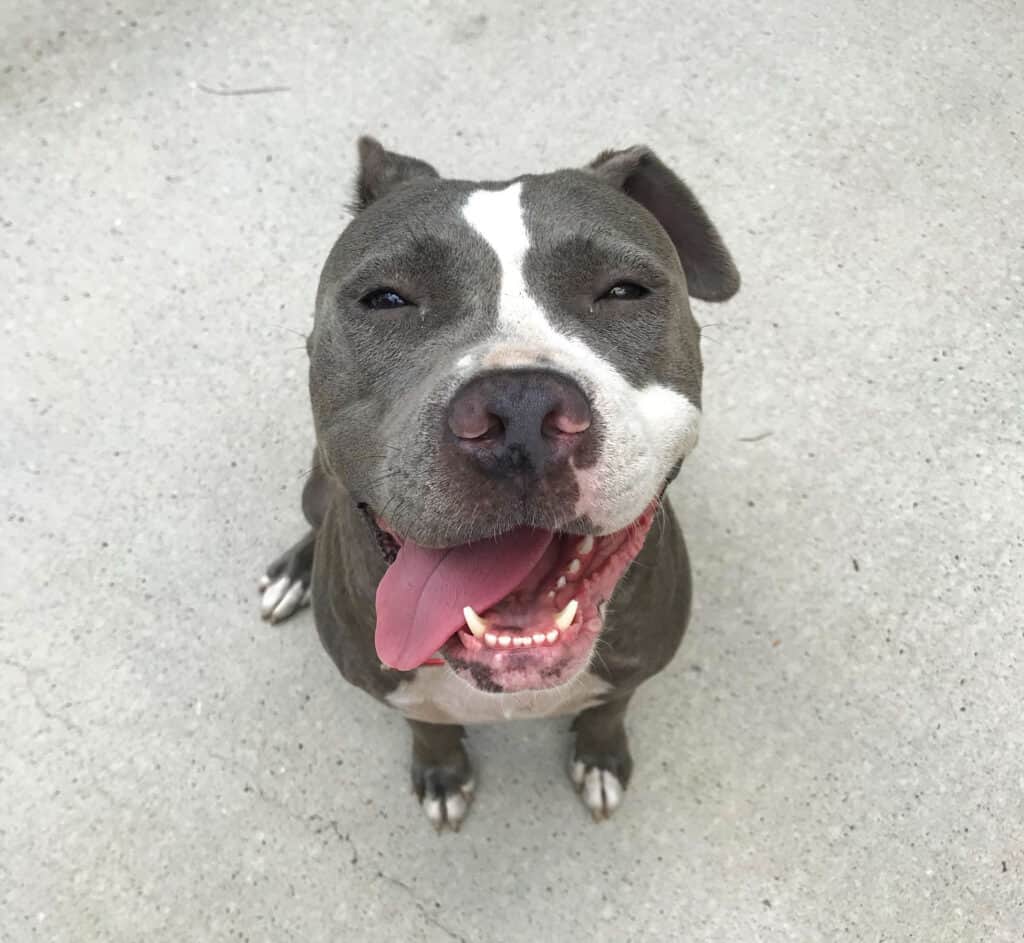
The Pocket Pitbull was originally bred with the intention of being a smaller version of a standard pit bull.
©iStock.com/Sir Taylor
The main differences between a Pocket Pitbull and a pit bull are their size, breed origin, and living requirements.
Pocket Pitbulls are a relatively newer hybrid that is ultimately crossed from the (in)famous pitbull breeds. As such, the distinction between a Pocket Pitbull and a true pit bull is quite variable. Still, some differences are notable, especially when it comes to size. The Pocket Pitbull was originally bred with the intention of being a smaller version of a standard pit bull, much like a toy poodle is a smaller version of a standard one.
Contrary to popular knowledge, pit bulls aren’t a single breed but a category that includes three breeds: the American pit bull terrier, the American Staffordshire terrier, and the Staffordshire bull terrier. These breeds are considered pit bulls, each recognized by breed organizations such as the AKC.
The Pocket Pitbull is a “hybrid” breed and isn’t officially recognized by any organizations. As such, there aren’t any breed standards consistent across the breed. These dogs cross between one of the three pit bull breeds and a Patterdale terrier. The resulting dog looks like a pit bull but has the size of the smaller Patterdale terrier.
Let’s look at these differences and a few more in detail below!
Pocket Pitbull vs Pit bull: Breed origin
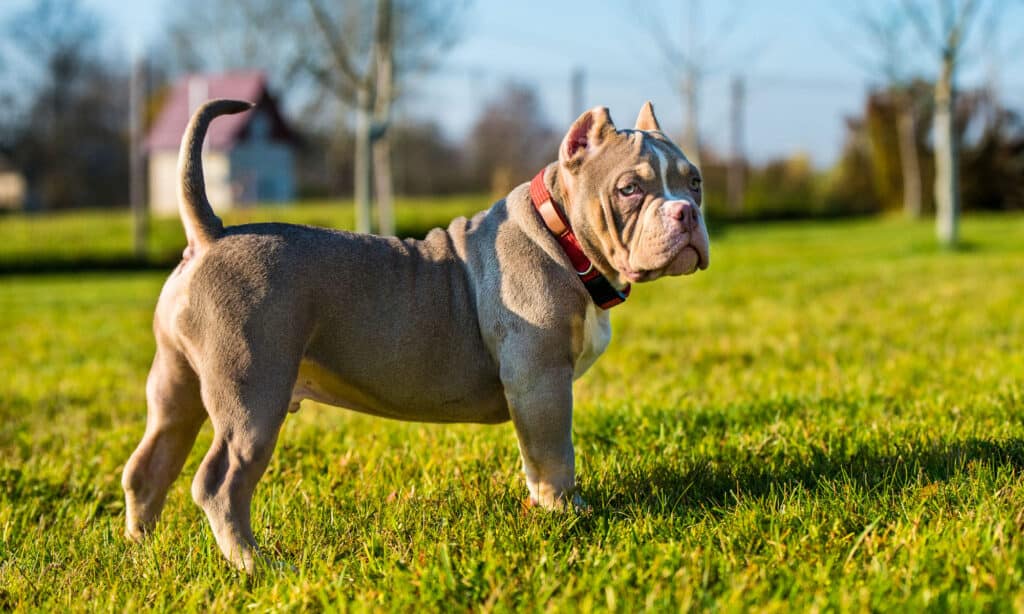
Hybrids like the Pocket Pitbull and many others were created during a wave of “designer breeding” in the 1990s.
©Zanna Pesnina/Shutterstock.com
The Pocket Pitbull isn’t an officially recognized breed but rather a hybrid cross between one of the three pit bulls and a Patterdale terrier. Hybrids like the Pocket Pitbull and many others were created during a wave of “designer breeding” in the 1990s. Designer breeds are usually simple hybrid that attempts to create a marketable breed with certain desirable traits. Other popular designer breeds include Labradoodles, cockapoos, and puggles.
Each of the three pit bull breeds has its breed origins, but the crosses today that most are familiar with occurred during the late 19th century in America. When dog fighting was gaining popularity, the various breeds were crossed, creating pit mixes that are probably more common today than any single breed.
Pocket Pitbull vs Pit bull: Size
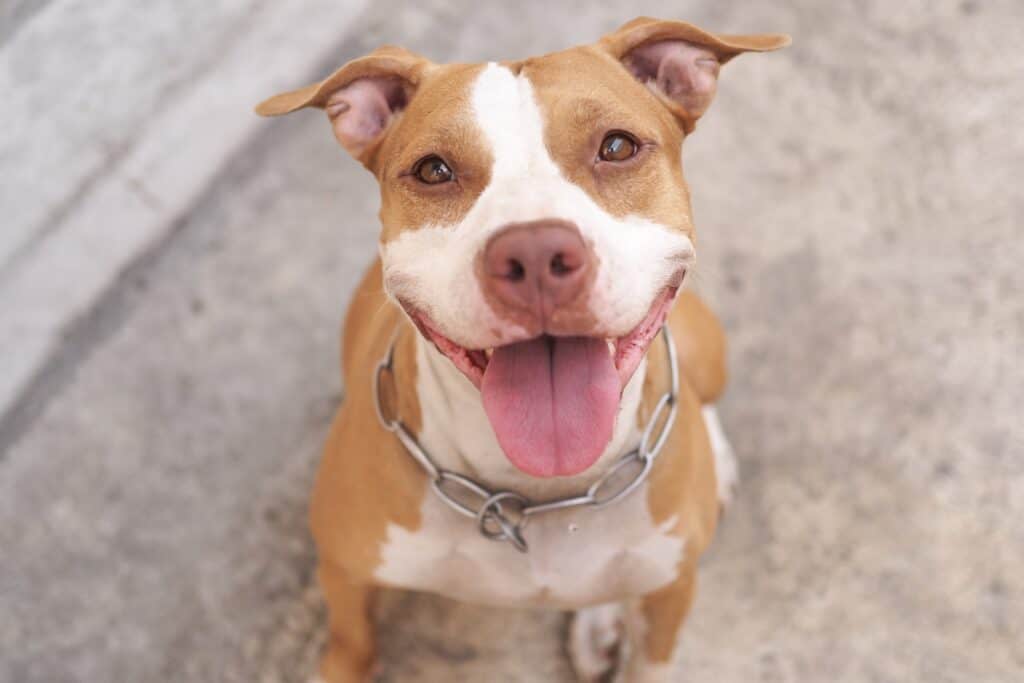
Pocket Pitbulls weigh about a third of what standard pit bulls do.
©Natthapot Chantaraviboon/Shutterstock.com
As their name suggests, Pocket Pitbulls are a smaller version of a typical pit bull. They are generally 12-16 inches tall and weigh 11-22 lbs, about a third the size of a standard pitty or pitty mix.
All three pit bull breeds are similar in size, and they average 18-24 inches tall and weigh between 20-80 lbs. Often, the build of a pit will depend on its genetics as some individuals are significantly smaller than others, despite being of the same breed.
Pocket Pitbull vs Pit bull: Appearance
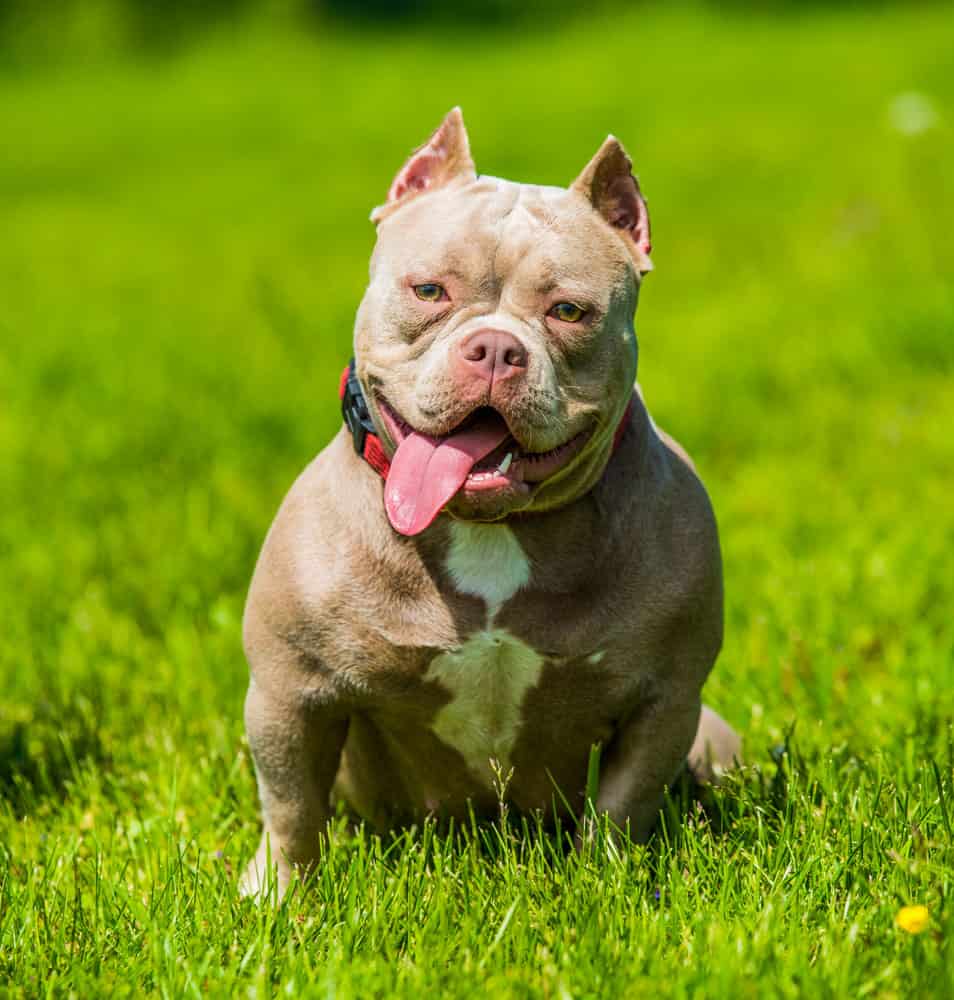
Pit bulls are generally well-muscled, stocky, and shorthaired dogs.
©Zanna Pesnina/Shutterstock.com
Most pitbull breeds, mixes, and hybrids are extremely similar in appearance. There aren’t any breed standards for how Pocket Pitbulls are “supposed” to look, although there are still standards for how they usually look. Pocket Pitbulls are short, stocky versions of their parents, usually resembling their pit side more than their Patterdale side. They can come in all sorts of colors but almost always have short hair.
Pit bulls are well-recognized for their appearance. They are generally well-muscled, stocky, and shorthaired dogs. Their fur is extremely short and only has a single coat, although they do shed. Each pit breed has its standard, but being well-muscled are features they all share. Additionally, pits can come in almost any color, including brindle and merle.
Pocket Pitbull vs Pit bull: Living requirements
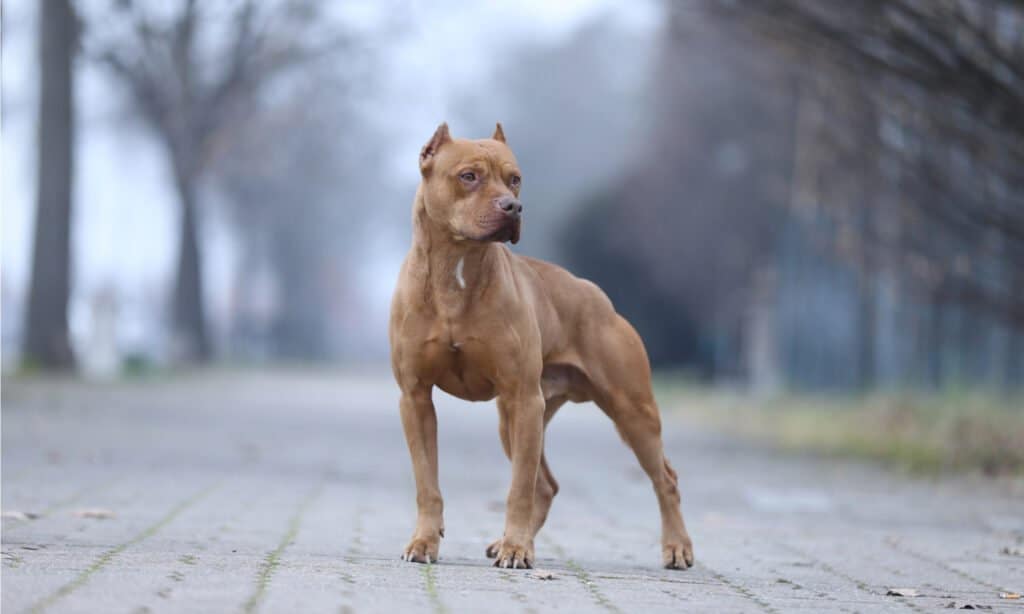
Pocket Pitbulls generally need less space than a standard pit bull.
©Sophia Tr/Shutterstock.com
One of the primary reasons Pocket Pitbulls were bred was to reach a niche of people who wanted a pitty but had smaller living arrangements. As such, the Pocket Pitbull is smaller and much better adapted to life in an apartment or similar living conditions. That said, they still need to be exercised daily.
Pit bulls are medium to large-sized dog breeds and can be quite active. Still, they do pretty well in apartments, provided they exercise enough daily. Due to their stocky builds, a pit bull isn’t a great endurance breed, so a few solid walks a day should be enough.
Pocket Pitbull vs Pit bull: Temperament
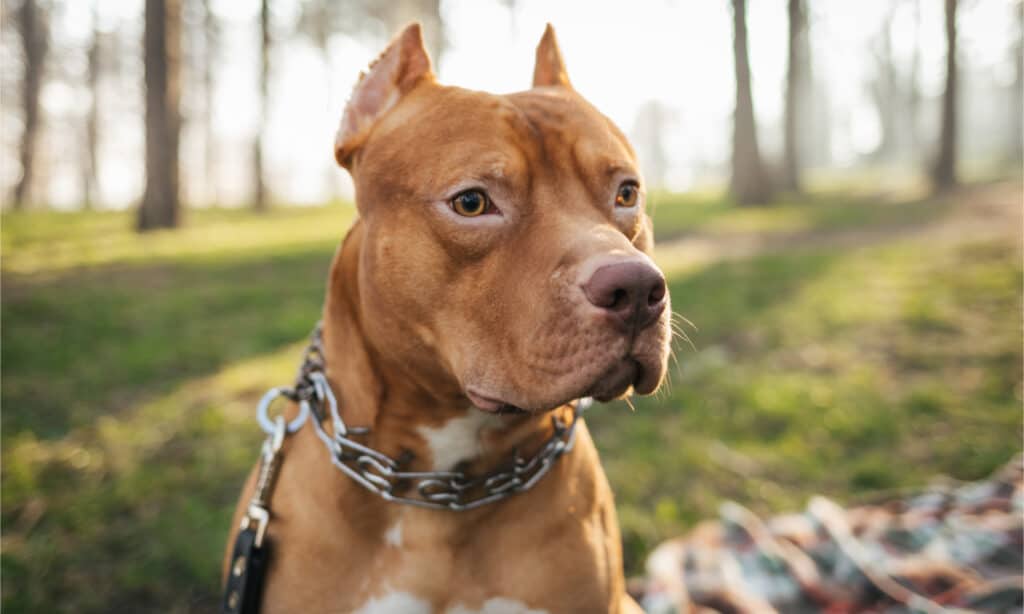
The Pocket and the standard Pitbull breeds are strong, courageous, sensitive, and loving.
©Pulikina Olga/Shutterstock.com
When it comes to temperament, both breeds are nearly identical. They are known to be courageous, affectionate, loving, and intelligent. The breed’s history as a fighting dog has marred them in the public eye, despite them being wonderful companions known for their sensitivity. The only difference between the Pocket and the standard pit is that the Patterdale mix occasionally brings a bit of a prey drive (squirrels beware).
Ready to discover the top 10 cutest dog breeds in the entire world?
How about the fastest dogs, the largest dogs and those that are -- quite frankly -- just the kindest dogs on the planet? Each day, AZ Animals sends out lists just like this to our thousands of email subscribers. And the best part? It's FREE. Join today by entering your email below.
Thank you for reading! Have some feedback for us? Contact the AZ Animals editorial team.

